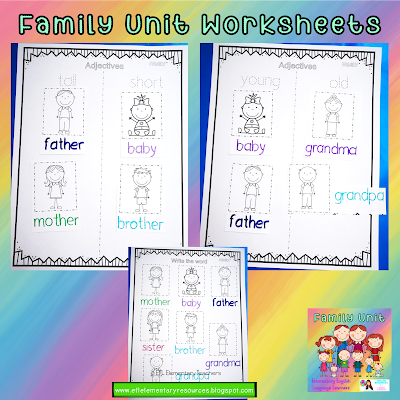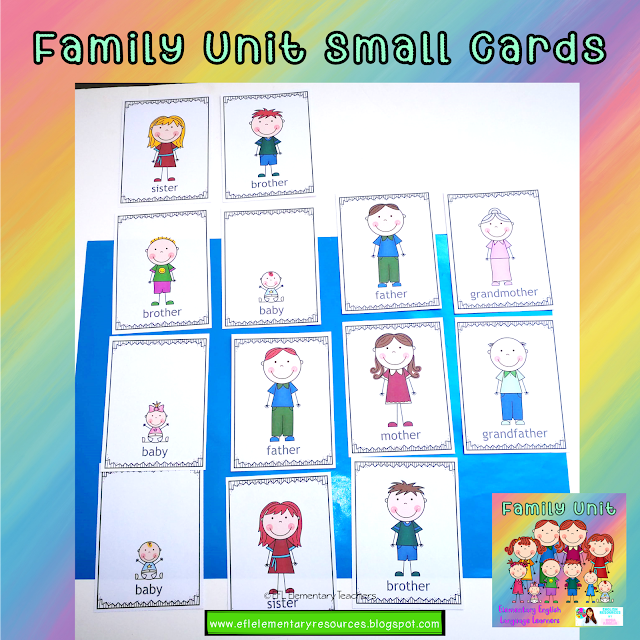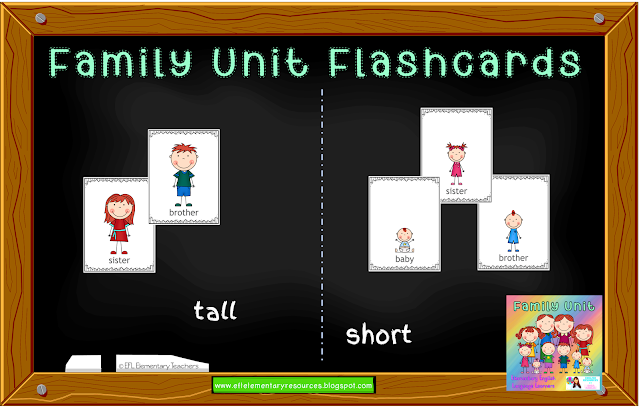This resource is included in the Family Unit for Elementary English Language Learners-Starters. Click here: https://www.teacherspayteachers.com/Product/Family-Activities-for-Elementary-ELL-1804475
The worksheets can be an assessment tool for you to identify if there is a gap in the learning process of this unit. Use them as an effective supplement for your textbooks. Take a look at the all the worksheets that you can find on the resource.
Labeling
worksheets are for your students to support writing.Students love to move on to worksheets with the cute family members.
Some
students just need a little help to develop writing in English. Here is a
simple tracing worksheet. This one is with mother and father, and I included
another worksheet with mom and dad. I can write any word that you are using in
your teaching.
Playing
Picture Bingo improves family members recognition and their facial features. They
will have fun and lower their anxiety factor in class. Have the students color
the hair in any of the playing colors by using the small cards included in the
resource. Those will be your calling cards.
Teacher:
Mother has brown hair! If the student has it, he/she will cross it out. The
winner is the one to cross all the family members.
Adding
adjectives to express the physical characteristics of the family members can
be challenging for the newcomers. Practice using young and old and tall short
to make more meaningful the way to talk about the people. This is a set of
sorting worksheets. Students will cut any of the worksheets and paste where it
corresponds. They can draw or bring pictures of their family members and sort
accordingly.
Let’s go for a family member crossword fun to improve independent learning.
Engage
students into writing the real names of their family members. Then, Let’s work
on sentence construction to develop the linguistic competence. On a paper or notebook students can write sentences
about their families as my example.
Promote
active learning with this worksheet.
Reading
simple sentences and matching to the correct picture and write the
corresponding name will model proper writing.
Another worksheet to
use for reading short sentences as part of the the reading instruction routine.
Adding
a little spice to the writing part, there two dice. One with long hair for
women and another with short hair for men. Throw the dice, complete the sentences
and color accordingly.
Use
the designed questionnaires, there are three to choose from, such as “How many people are there in
your family?" You can prepare a bar graph on the board. Challenge your students to compete in two teams to see who can collect
the most survey responses within a given time limit. Give an award and count
the answers.
Follow me at Pinterest!https://www.pinterest.com/ei98srl
















.png)

















.png)













